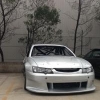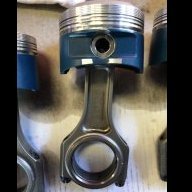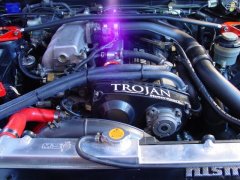Dry Sumps And You.......
Announcements
-
Similar Content
-
Latest Posts
-
Hmm. You're probably best off working out what the lobe centreline or even the LSA is for the stock cams, with VCT OFF. That's bound to be out there somewhere. Then, work on the assumption that the Kelford centreline is probably the same, and wouldn't be more than a couple of degrees away, if it is different at all. I'm very surprised that you needed to adjust the exhaust cam by 5° to get it on spec. That screams there's another problem somewhere. Anything from the belt being 1 tooth off (how many degrees is one tooth worth?) to simple user/measurement error on the degree wheel. I say this because Kelford, like most quality cam manufacturers these days, does a pretty good job of actually making the cams to spec, not relying on patching it up afterwards like we had to do back in the 80s.
-
By TurboTapin · Posted
Besides packing it, you can also fill your pump through the oil filter inlet port. After cranking for what felt like an eternity without pressure, i fed a tube in through there and filled it with oil. Cranked for a few seconds after that and had pressure. -
By TurboTapin · Posted
That's exactly what I told myself. I'm happy it came out. -
My bet is there's a fuse somewhere you blew that feeds power to the ECU. Or you've bumped something out behind the dash board.
-
By Desean Strickland · Posted
Does anyone know what the centreline should be for the vct intake cam? On my cam spec card it just says VARI and doesn’t actually tell me what the centreline should be. I had to adjust my exhaust cam gear by about 5 degrees advanced so I’m guessing I would have to adjust my intake as well? Current intake centreline is 119 deg. Iv already asked kelford and they won’t respond, It’s the 246-A 262 cams. thanks for the help guys
-








Recommended Posts
Create an account or sign in to comment
You need to be a member in order to leave a comment
Create an account
Sign up for a new account in our community. It's easy!
Register a new accountSign in
Already have an account? Sign in here.
Sign In Now